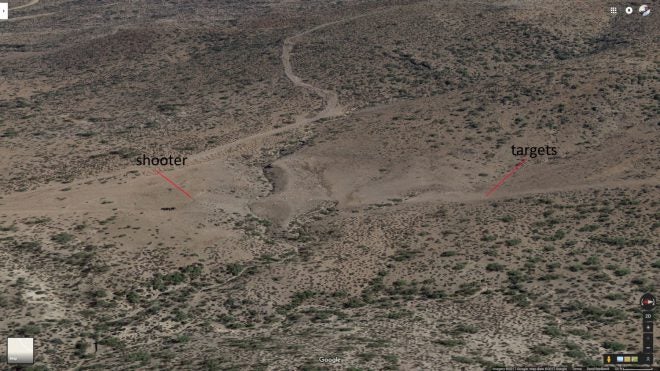If you’ve worked the pits at a high power rifle match you probably already know what it sounds like to be shot at from a distance. If you’ve been downrange for Uncle Sugar, you might also know. But thankfully, most folks don’t know what bullets sound like as they cut the air. To get a feeling for this, I set up some water jugs at about 150 yards downrange along with a camera nearby. Now, that’s not exactly long range, but it is far enough to hear a distinct separation between the components of the sound of a gun shot. It’s also pretty close to the practical limit for .22lr. Sure, accomplished shooters can do miracles with a .22lr at much greater distances, but there is significant drop and it gets challenging. I took several shots both suppressed and unsuppressed with .223 Rem as well as subsonic .22lr.
We learned several things. The first, really obvious thing is that the sound of a supersonic bullet passing and the sound of any bullet impacting are both fairly loud. We also learned that, while silencers do a great job at making it more comfortable to shoot firearms, they don’t completely eliminate the sound. If you listen carefully, the report from the muzzle of both the AR-15 and the Ruger 10/22 can be heard 150 yards away, even with the silencers mounted. Another, more subtle point illustrated by the video, is the order in which the sounds reach an observer, according to his position. We hear the supersonic crack of the bullet passing before the report from the muzzle of the AR-15. The sound of the bullet impacting the jugs is lost under the much louder “crack” of the miniature sonic boom heard as the shockwave created by the bullet reaches the observer.
The subsonic .22lr is even more interesting. We hear the report of the rifle, then the sound of the bullet “whisssshing” through the air, then the whack of it hitting the water jug. A sort of rapid “pop fffwit thump” sound, followed sometimes by the classic “zing” of an unstable bullet tumbling through the air as it continues downrange. Although the report of the .22lr rifle beats the bullet to the target, it just barely does so. Sound travels at about 1,100 fps, depending on altitude, temperature, and humidity and the muzzle velocity on that load is about 900 fps. The time separation for the AR-15 was a bit longer because its muzzle velocity is almost three times the speed of sound.
It’s important to note that cameras aren’t good at portraying the relative loudness of sounds. That’s because their automatic gain control feature works to try to keep things at close to the same volume. Some sounds also exceed the camera’s capacity to record too. The ballistic crack of a bullet can be over 130 dB. That’s way louder than the camera can capture and the duration is shorter than the sample rate. Still, this gives a general feel for how well these suppressors are working and the timing of the various components of sound.
 Your Privacy Choices
Your Privacy Choices
